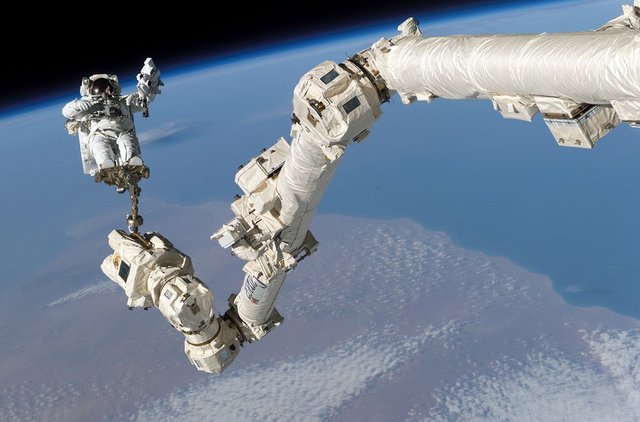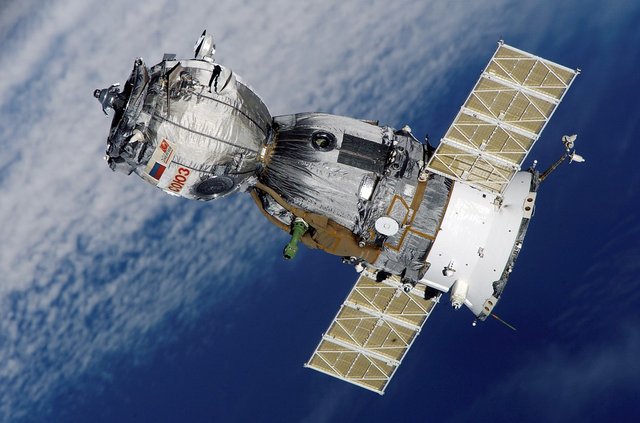Everything you need to know about the ISS
I take for granted that, if you follow me, you know what the ISS is, that thing that from time to time crosses the night sky looking like a fast moving star.
Every single time I am around someone sharing this info there's a recurrent questions that arise: What is its purpose?
Why is it passing by several days in a row?
Allow me to deepen a bit of info about this wonder of human engineering in this article.

What is it?
The ISS, as its name points out, is a station that is permanently orbiting Earth. We can claim that it is another satellite of our beloved planet. The main difference with other satellites is that this one is designed to support life and be inhabited by astronauts.
It is of the size of about 2 Boeing 747. From edge to edge of its solar panels, it is around the size of a football field's size and weights 450 times what an average car does. Uses 52 computers to control its complete functioning with over 12 kg of wires in its interior.
The entire station is designed in modular segments. This allows an easy assembly in orbit. The first module was called Zarya and was set in orbit back in November of 1998. Since then, several other modules were added, and it is still considered "under construction". The first crew arrived 2 years after the first module, November 2000.
The well known solar panels were installed over several trips done between the year 2000 and 2009. Today, the ISS has 15 modules: 5 Russian, 7 American, 2 Japanese and one European. Even when NASA claimed in 2011 that: "All the modules were installed", there's still Russian and European modules waiting to be installed.

In the year 2001 the MSS (Mobile Service System), or CanadArm, was installed. A robotic arm that helped on the installation of the modules as they arrived. It is also used to receive the capsules that arrive with crew or supplies. This arm can withstand a weight of up to 110 tons, this is, a whole space shuttle. During this last February (2017), a Dragon capsule from SpaceX docked to the station carrying more than 2 tons of supplies and taking with it the disposals of the station. This arm, is also used to aid the astronauts in their EVAs (Extra-Vehicular Activities, space walks).
The ISS has a 6 crew members capacity along with some eventual visits. They arrive with the Russian Soyuz, that is launched into space as part of a rocket, from a base located at Kazakhstan. The Soyuz is used to carry Astronauts and supplies to the station and its the same one that is used to make them come back down to Earth. The Soyuz is also an emergency vehicle: There's always at least one docket to the station... Just in case, you know.

What is it for?
The main role it has is: To be the only International laboratory with micro-gravity conditions.
This offers a unique lab environment, impossible to have on Earth.
Yet, this is not the only thing.
A fundamental part of the studies done at the ISS are related with how does the human body respond to the space conditions over a prolonged periods of time.
Analyzing this is a fundamental stepping stone that will enable us to plan future space projects.
So, besides being the scientists that perform the experiments in the station, the Astronauts are also: The guinea pigs.
Why do we see it sometimes and others, we don't?
It is orbiting 400 km above our heads, at an 8 km/s speed. Each orbit takes 93 minutes and in a day in completes 15.54!
.
This orbit is slightly tilted, in 51.65° compared to the Equator line. The combination of these two factors makes it look, from our perspective, "shifting" day by day. This slight shift makes the orbit move to the East with each consecutive pass.
This is why, we see it several times in a row, to later not see it for a while. Of course, for us to be able to notice it, we need to look at it "at the right time", this is: During night time. And, since it is not a self-luminescent object, we need it to be reflecting the sunlight at the right angle.
The best moments to watch it pass by are during sunsets and sunrises, where it reflects the sunlight with more efficiency towards us.

We ALL wanted to be astronauts at some point in our life (If you didn't, you lost your childhood somewhere). Yet, we were all born a bit too soon for it to be as usual as getting on a plane.
I do still want to be one! What about you?
Awesome article! It has tons of really good information. Man I cant wait until commercial space flight becomes more common that is going to be so cool. Just book a hotel room at a space hotel lol :) .
We recently got to visit the space and rocket center (pictures on my blog, if interested) where they have full size modules you can walk through. It's pretty amazing. They even have a little version of the Canada Arm you can control.
Only American people have these luxuries of visiting cool places like space and rocket center, we live in Asia so we will one check the pictures on your blog and watch some videos on youtube @renzoarg
The ISS Is on Earth, It Is definitely not In outer space.
I like a pict @renzoarg
Super cool! Thanks for sharing
This post has received a 2.21 % upvote from @booster thanks to: @renzoarg.
Good information @renzoarg
i m so curious to visit space and thank you for this information i am following you now @renzoarg